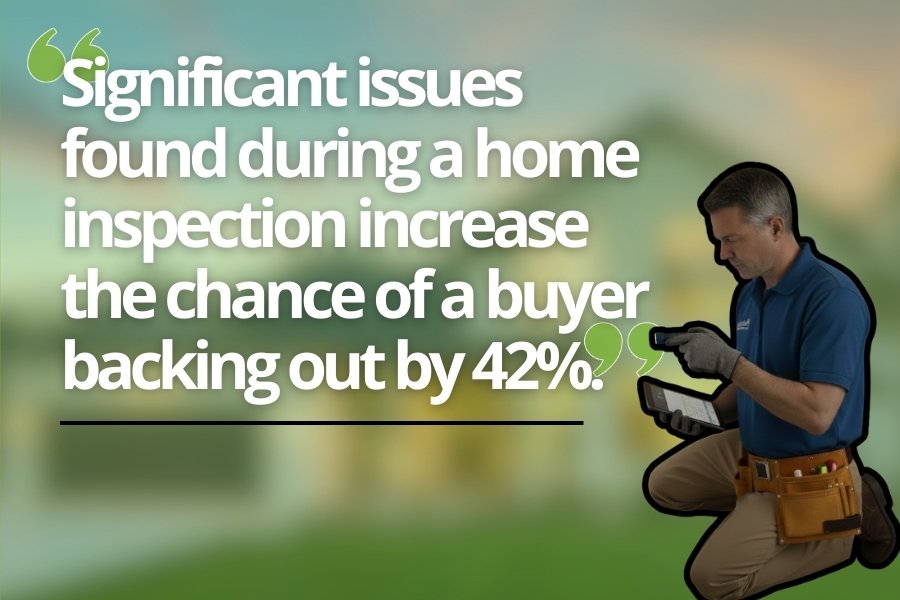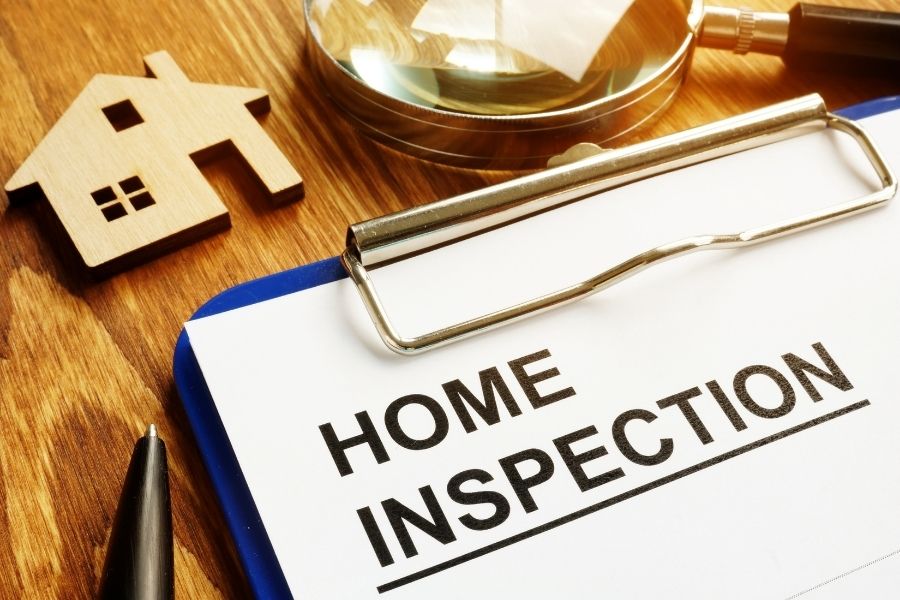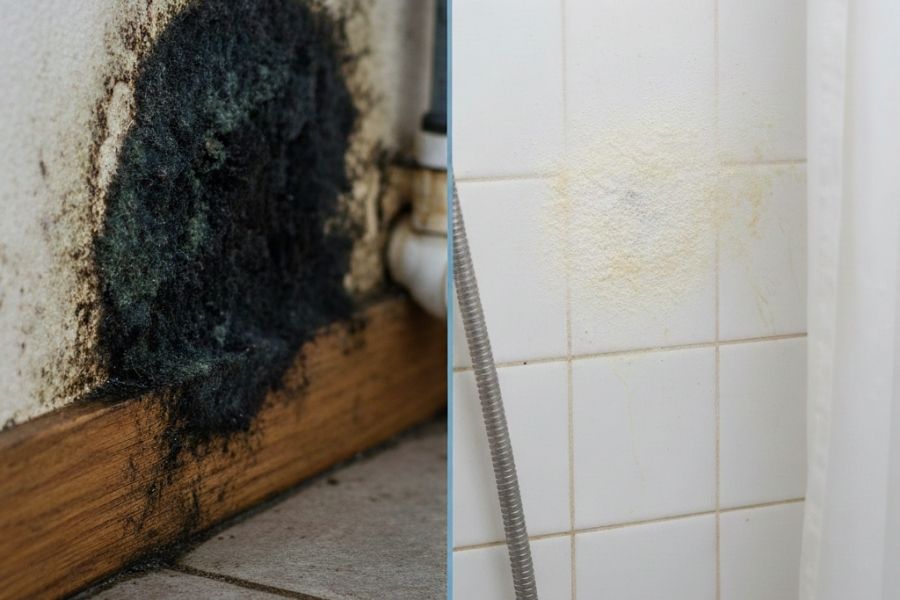Buying a home is one of the largest financial decisions most people ever make, and it is natural to wonder how long do home inspections take before you move forward with such an important purchase. Before you sign the final paperwork, you want to know exactly what you are getting, and that is where a full home inspection becomes essential.
A home inspection gives you a clear, unbiased look at the property’s condition so you can make informed choices about repairs, negotiations, and next steps. One of the first questions buyers ask is straightforward:
How long does a full home inspection actually take? The answer depends on several factors.
NISI Evansville Inspections provides home inspections, mold inspections, radon testing, and termite inspections throughout Evansville, Newburgh, and the surrounding areas.
Our goal is to offer clear, detailed reporting so you know exactly what to expect from the inspection process and the home itself.

Table of Contents
ToggleHow Long Home Inspections Usually Take
Most full home inspections take about two to three hours from start to finish. This is the average range that works for many single family homes in typical condition. However, it is important to remember that this is an estimate rather than a strict rule.
Here is a simple breakdown:
- Condos, townhomes, or small homes: Often closer to 1.5 to 2 hours, especially if there is less square footage and fewer systems to inspect.
- Average single family home: Typically 2 to 3 hours, which allows enough time for a thorough look at all major components.
- Large or older homes: May require 3 hours or more, especially if there are multiple HVAC units, additions, older systems, or complex layouts.
- Homes with extra services: If you add radon testing, mold testing, or termite inspections, the time on site or total process window can increase.
The time spent is a sign that the inspector is taking your investment seriously. A very fast inspection often means the inspector is rushing and may not be looking closely enough.
Key Factors That Affect Inspection Time
Several details about the property and the services you choose can change how long the inspection will take.
1. Size and Layout of the Home
Larger homes simply take longer to inspect because there is more to look at. More bedrooms, bathrooms, and living spaces mean more outlets, fixtures, windows, and surfaces to check.
A complex layout can also slow down the process. For example:
- Multiple levels or additions
- Split floor plans
- Finished and unfinished areas mixed together
Each space needs to be evaluated carefully so nothing is missed.
2. Age and Condition of the Home
Older homes often take longer to inspect than newer ones. This is because:
- There may be older materials and systems in place
- Previous repairs or renovations may need extra attention
- Some components might no longer meet current standards
If the home has visible issues such as water stains, sagging floors, or damaged siding, the inspector may need additional time to document the issue and note any visible contributing factors.
3. Accessibility and Safety
Inspectors must be able to safely access key areas of the home, including:
- The attic
- The crawl space or basement
- Electrical panels
- Utility rooms and closets
- Roof access points when appropriate
If these areas are blocked by stored items or locked doors, the inspector may need to stop and wait for access or note the limitation in the report. Clearing pathways and unlocking spaces ahead of time can keep the visit on schedule.
4. Specialty Services Or Testing
Many buyers choose to add optional services to get a more complete picture of health and safety. These can add time on site or extend the overall timeline.
Common add ons include:
| Service | Typical Added Time or Process |
|---|---|
| Mold Inspection | Completed during the visit with samples sent to a lab. Results follow later. |
| Radon Testing | A radon monitor or test kit remains in the home for about 48 hours. |
| Termite Inspection | Usually a quick add on that slightly extends the visit, especially if evidence is found. |
These services cover concerns that fall outside the scope of a standard visual inspection and may require lab testing or specialized equipment.
5. Questions and Walk Through Time
If you attend the inspection, you may have questions as you walk through the home. Good inspectors take time to explain what they are seeing and what it means for you as the buyer.
While this can extend the visit slightly, it is one of the most valuable parts of the process. You get live explanations, real examples, and practical advice instead of just reading a report later.
What Happens During a Home Inspection
A full home inspection is a visual examination of the home’s major systems and components. The inspector is not tearing walls open or performing engineering level analysis. Instead, they focus on the accessible areas to identify defects, safety concerns, and items that may need repair or replacement.
A standard inspection usually includes:
- Roof: Condition of shingles or other coverings, flashing, gutters, and visible roof structure.
- Attic and Insulation: Ventilation, insulation levels, signs of moisture, pests, or structural issues.
- HVAC Systems: Heating and cooling equipment, distribution systems, visible ductwork, thermostats, and basic operation.
- Foundation and Structure: Visible foundation walls, signs of settlement or cracks, and any obvious structural concerns.
- Basement or Crawl Space: Evidence of moisture, water intrusion, wood rot, pests, and condition of structural elements.
- Plumbing: Exposed visible pipes, fixtures, water heater, and functional flow and drainage at sinks, tubs, and toilets.
- Electrical Systems: Main panel, breakers, visible wiring, outlets, switches, and basic safety checks.
- Windows and Doors: Operation, seals, visible damage, and signs of moisture or drafts.
- Exterior and Siding: Siding condition, trim, grading around the home, decks, patios, and steps.
- Built In Appliances: Basic operation checks of installed appliances such as stoves, dishwashers, and some built in microwaves.
Throughout the inspection, the inspector takes notes and photographs. These details are later organized into a written report that outlines what was inspected, what issues were found, and which items may need maintenance, repair, or further evaluation.
Why Home Inspections Take the Time They Do
It may be tempting to want a fast inspection, especially if you are busy or under contract timelines. However, a careful inspection requires time for several reasons:
- Thorough evaluation: Each system and area needs to be observed, tested where possible, and documented.
- Photo documentation: Clear photos support the written findings and help you understand what the inspector saw.
- Safety checks: Inspectors must move carefully in attics, on ladders, or in crawl spaces to avoid injury and to prevent damage to the home.
- Complex issues: If anything unusual or concerning appears, the inspector may spend extra time investigating and verifying the issue.
If the inspector is rushing, it increases the risk that important details will be missed. A two to three hour inspection is a sign that the inspector is taking the condition of your future home seriously.
Timeline Before, During, and After the Inspection
To better understand the process, it helps to look at the timeline as a whole.
Before the Inspection
- You schedule the inspection, often within a short window specified in your purchase agreement.
- You decide whether to add services such as mold, radon, or termite inspections.
- The seller is notified of the date and time so the home can be accessible.
During the Inspection
- The inspector arrives at the scheduled time and begins with the exterior or roof, if conditions allow.
- They work through a system by system checklist, documenting everything they see.
- If you attend, you may walk through at the end for a summary or join during parts of the inspection.
- The visit usually lasts between two and three hours, longer for certain homes or services.
After the Inspection
- The inspector prepares a detailed written report with photos and comments.
- Most buyers receive the report within about 24 hours.
- You review the report with your agent or advisor.
- You can then decide whether to request repairs, negotiate, or move forward as planned.
What Buyers Should Expect During the Inspection
As a buyer, you can decide whether you want to be present. Many buyers choose to attend because it is an excellent chance to learn about the home.
During the inspection, you can expect:
- Clear explanations: Inspectors describe issues in plain language and avoid confusing jargon.
- Visual examples: You may be shown actual problem areas, such as a leaking pipe or damaged shingle.
- Safety notes: Potential fire hazards, electrical safety issues, or trip hazards are highlighted.
- Maintenance tips: Inspectors often share simple maintenance advice to help you care for the home after you move in.
You do not need any special knowledge. Your main job is to listen, ask questions, and think about how the findings impact your plans and budget.

How Sellers Can Prepare for a Home Inspection
If you are the seller, preparation can help the inspection go smoothly and stay within the expected time frame. A clean, accessible home also leaves a better impression on buyers.
Here are a few simple steps:
- Unlock gates and all exterior doors.
- Clear access to the attic hatch, crawl space, electrical panel, and utility areas.
- Remove items that block appliances, water heaters, or HVAC units.
- Replace burnt out light bulbs so electrical testing is easier.
- Secure pets in a safe, comfortable area away from the inspector.
These small efforts can reduce delays and help the inspector complete their work efficiently.
What Home Inspections Do Not Cover
A full home inspection is detailed, but it does have limits. Inspectors generally do not:
- Move heavy furniture or personal belongings
- Open up walls or ceilings
- Perform specialized engineering reports
- Guarantee future performance of systems
- Evaluate cosmetic issues that do not affect function or safety
Some concerns may require additional specialists, such as structural engineers, HVAC technicians, or licensed electricians. The inspection report will often recommend further evaluation when this is the case.
Understanding what is and is not included helps you set realistic expectations about timing and scope.
Common Related Questions About Inspection Time
Do weather conditions affect the time?
Light rain, cold, or heat usually do not affect the schedule. However, severe weather can make it unsafe to inspect roofs or certain exterior areas. In those cases, the inspector may return later or note the limitation in the report.
Can a home fail an inspection?
There is no pass or fail grade on a home inspection. The inspector’s job is to describe the condition of the home, not to approve or reject it. You and your agent use the report to decide what comes next.
How fast do you get the report?
Most buyers receive their report within about 24 hours after the inspection. This quick turnaround helps you stay on track with contract deadlines and negotiations.
Will the inspector tell me whether to buy the home?
Inspectors do not tell you whether you should or should not buy the home. Instead, they give you facts and findings so you can decide what is best for your situation.
When to Call a Professional Inspector
If you are planning to buy or sell a home, a professional inspection is one of the best investments you can make. You should call a professional when:
- You need a complete, unbiased report before closing on a home
- You want to understand potential safety issues or expensive repairs
- You are concerned about mold, termites, or radon levels
- You want clear documentation that you can use during negotiations
NISI Evansville Inspections serves Evansville, Newburgh, and surrounding communities with full home inspections and related services. Their focus is on delivering clear, thorough reports that help you move forward with confidence.
Conclusion
A full home inspection usually takes about two to three hours for most buyers, with timing adjusted based on the size, age, and condition of the home and any additional services you choose. That time is well spent. It gives you a detailed, organized look at the property so you are not surprised by hidden problems after closing.
When you partner with a qualified inspector, the process is straightforward and informative. You walk away with a clear written report, photos, and practical recommendations that support your decision making.
If you are ready to schedule a home inspection or want to add services such as mold, radon, or termite inspections, NISI Evansville Inspections can guide you through every step of the process and provide the information you need to feel confident about your next move.



